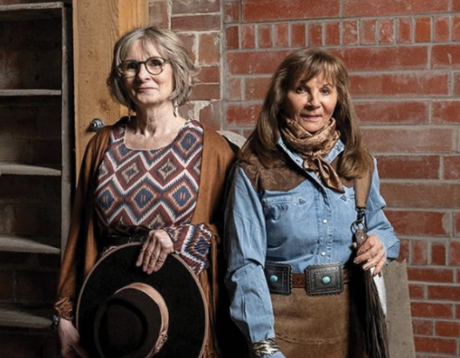 With Oscar buzz already building around director Steven Spielberg’s film epic War Horse ahead of its Christmas Day release across Canada, theatregoers may be surprised to learn that the horse-assisted heroism of Canadian cavalry units during the First World War helped inspire the movie.
With Oscar buzz already building around director Steven Spielberg’s film epic War Horse ahead of its Christmas Day release across Canada, theatregoers may be surprised to learn that the horse-assisted heroism of Canadian cavalry units during the First World War helped inspire the movie.
Based on the 1982 novel of the same name by British children’s author Michael Morpurgo — a book later adapted for a hugely successful stage production that uses life-size, mechanical puppets for the horses — the film is rooted in Morpurgo’s rediscovery and popularization of the story of Allied cavalry units in the First World War.
Morpurgo has described how a series of conversations with Great War veterans in rural Devon, England, sparked his interest in the grim saga of how one million horses were deployed and died during the 1914-18 conflict by the British army’s cavalry forces, which included Canadian mounted units that fought famously under the Union Jack in one of the war’s pivotal moments: the March 1918 Battle of Moreuil Wood.
The War Horse stories — novel, play and film — chronicle the enduring bond between an English boy and his horse, Joey, after its conscription for the war effort, and highlight the horrors of the First World War for both men and their mounts.
But the unprecedented publicity opportunity generated by the Spielberg film has prompted fresh examinations of the real-life role played by Allied cavalry units in the war. A Morpurgo-backed exhibition called War Horse: Fact & Fiction opened at the National Army Museum in Britain in October. A scholarly work on the subject — historian Simon Butler’s The War Horses: The Tragic Fate of a Million Horses Sacrificed in the First World War — was published earlier this year, and a classic, 1934 war memoir by the Jack Seely, the British commander who led the Canadian Cavalry Brigade from 1915 to 1918, has just been republished.
Seely was Britain’s secretary of state for war from 1912 to early 1914 before taking a top battlefield post in Europe after the war began in August 1914. In early 1915, he took command of several cavalry units from Canada, including the Alberta-based Lord Strathcona’s Horse, a mounted regiment that had served with distinction in South Africa during the Boer War from 1899 to 1902.
Seely himself rode a horse named Warrior that would become legendary. When it died in 1941 at the age of 32, the Times of London ran an obituary honouring the animal.
“Twice he was buried by the bursting of soft ground, but he was never seriously wounded,” the article recalled. “The Canadians, all of whom held Warrior in great affection, called him ‘The horse the Germans can’t kill.’ “
Military strategy was at a crossroads during the First World War, with the cavalry units critical in the fast-paced clashes of the 19th-century increasingly unsuited to the mechanization that brought massive artillery barrages and the slow, bloody grind of trench warfare to the battlefields of Europe.
But occasionally, said Canadian War Museum historian Tim Cook, the horrifying stalemate that characterized so much of the war against Germany in Western Europe would break down, and “in a temporary way,” the great struggle over a few metres of mud “became a war of movement again.”
That’s when horse-mounted fighters were deployed to “strike hard and fast where the enemy is vulnerable,” he said.
In what Cook calls “one of the last major charges of the war,” a force of about 100 men from Lord Strathcona’s Horse raced into a battle wielding sabres against advancing German soldiers during the March 30, 1918, fight for Moreuil Wood, a highly strategic site in France.
The Canadian charge, ordered by Seely, was one of several Allied actions that helped thwart the Germans’ spring offensive, the collapse of which is widely viewed as the beginning of the end of the war.
British-born George Flowerdew, who had immigrated to Canada before the war to become a rancher in British Columbia, led the charge and was mortally wounded in doing so.
His heroics, which earned him a posthumous Victoria Cross, were immortalized in one of the best-known paintings to emerge from the war: Charge of Flowerdew’s Squadron by renowned British war artist Sir Alfred James Munnings.
The artwork, held today by the Canadian War Museum, also appears in Seely’s recently republished reminiscences of life on the battlefield with Warrior.
The Canadian charge represented a final “throwback” to an earlier age of war, said Cook, and what it achieved in helping to halt the German advance was bought with a “terrible price” in lives lost — both men and horses.
The “pack horse was more important than the cavalry charger” in the First World War, noted Cook, pointing out that moving supplies of food and ammunition to the front lines was a constant need whereas waves of armed riders on galloping horses — both virtually defenceless against machine guns — had mostly become a thing of the past.
The film version of War Horse, he added, is sure to offer Canadians an informative glimpse of a little-remembered feature of the First World War.
“Any time Spielberg touches something it’s more than likely going to be a very strong product,” said Cook. “I think it’s going to be a powerful story that will emphasize the human-animal bond and . . . help to humanize the experience of this war.”
Source: Vancouver Sun
War Horse Official Trailer
















